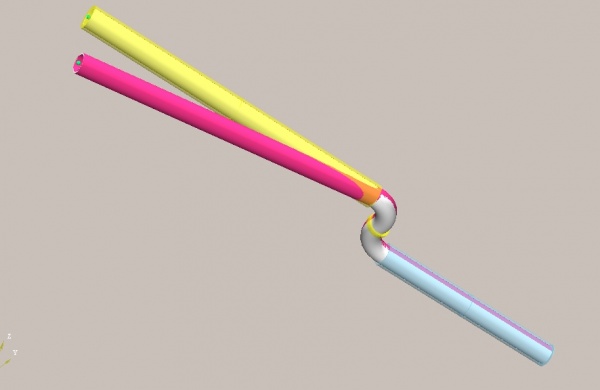Difference between revisions of "VTube-LASER v1.76.3"
| Line 21: | Line 21: | ||
<td width=300> | <td width=300> | ||
VTube-LASER can now automatically damp correction data in order to avoid oversteer. | VTube-LASER can now automatically damp correction data in order to avoid oversteer. | ||
| + | <br> | ||
Two adjacent 90 degree bends that are close to each other followed by a long straight causes VTube (and other measuring solutions) to overcorrect the end of the long straight. The end is supposed be corrected to the middle straight (the MASTER) like this: | Two adjacent 90 degree bends that are close to each other followed by a long straight causes VTube (and other measuring solutions) to overcorrect the end of the long straight. The end is supposed be corrected to the middle straight (the MASTER) like this: | ||
Revision as of 00:42, 4 April 2012
Revision 1.76.3Back to VTube-LASER |
 NEW: Automatic Damping for Correction
NEW: Automatic Damping for Correction
|
VTube-LASER can now automatically damp correction data in order to avoid oversteer.
Two adjacent 90 degree bends that are close to each other followed by a long straight causes VTube (and other measuring solutions) to overcorrect the end of the long straight. The end is supposed be corrected to the middle straight (the MASTER) like this: But what it does is a wag-the-tail oscillation in the correction loop like this: The result is the correction causes the leg to overshoot the target. This has been a traditional problem in the industry for decades. However, I never was able to associate it with a tube shape like above until now. I decided to learn from the operators what they do when this occurs. If they have control of the loop, they work hard to damp the correction data. Older measuring centers don’t allow for this. But VTube-LASER does. The only problem is that manual damping is impractical on the shop floor. So I added two kinds of automatic damping. The first one reduces the correction by 50% in any of three sets of bender axis data (the Length, Rotation, and Bend). It allows for this damping in each axis independently – so they can choose the appropriate axis to damp. The second kind of damping is based on the previous adjustment values. Using the previous value causes the correction to be reduced even faster if this kind of oscillation exists. The new Automatic Correction Damping as shown in the window below (see the area with the green curve). Without damping, for example, the first bend angle will be corrected 2.1 degrees to 98.3. But with damping – it is corrected 1.1 degrees to 97.3 (half the correction). (The values are rounded on the screen.)
|
 Enhanced: Bender Setup Window Redesigned
Enhanced: Bender Setup Window Redesigned
|
VTube-LASER's Bender Setup menu was redesigned to fit more options into the window. |
Other Pages
- Back to VTube-LASER





